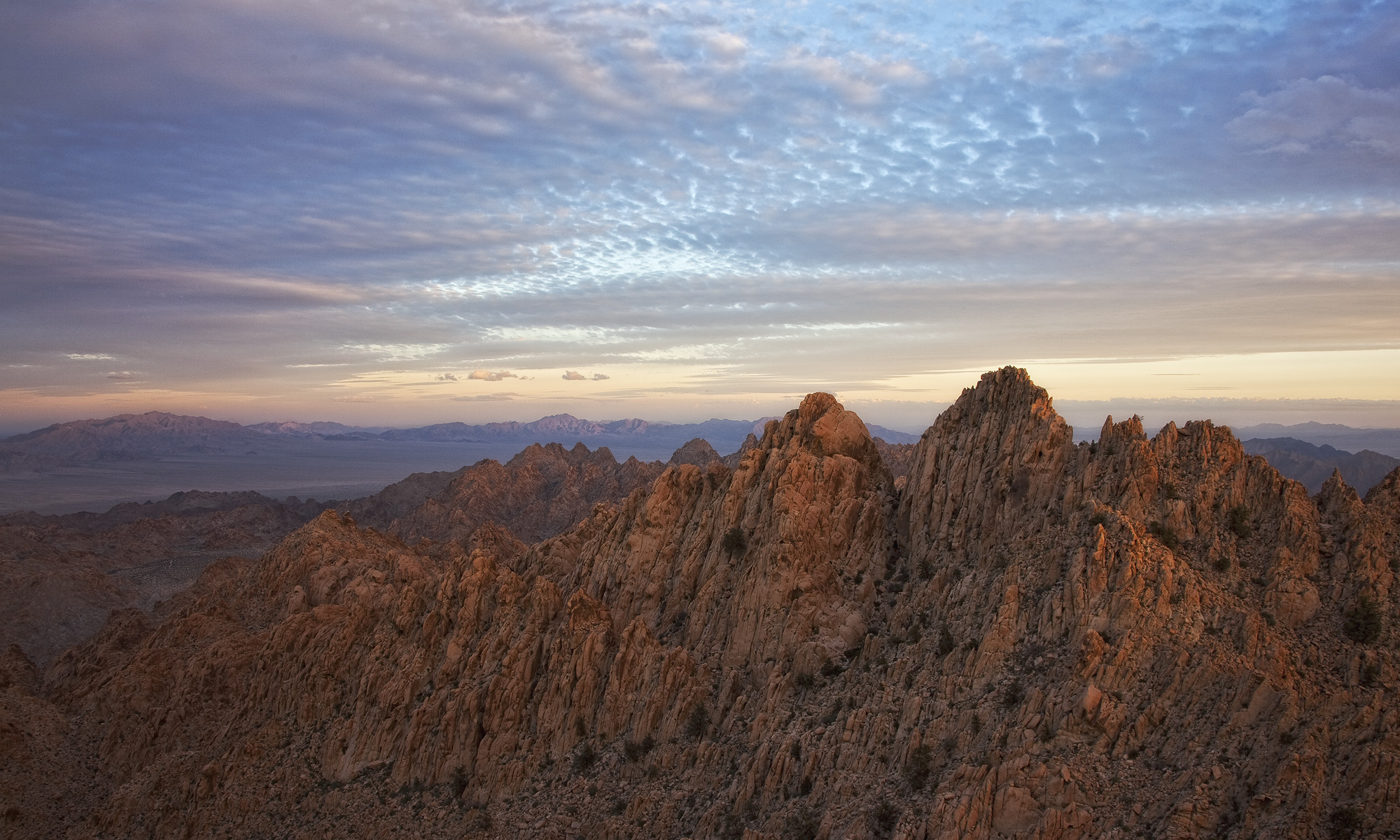To the east of the Mecca Hills Wilderness and southeast of Joshua Tree National Park lie the Chuckwalla Mountains. The Chuckwallas are more or less continuous with the Little Chuckwalla Mountains; together these ranges form an imposing range of mountains separating the Interstate-10 corridor from desert areas further south. Despite their proximity to the heavily traveled Interstate-10, the Chuckwallas carry with them an almost certainty of solitude and quiet.
Clocking in at almost 100,000 acres, the Chuckwalla Mountains Wilderness was created in 1994 as part of the California Desert Protection Act. The mountains themselves were so named because of the large-bodied lizard of the same name. Many (many) rock outcrops provide great habitat for chuckwallas, which stick close to tight cracks, which they can wedge their bodies into to escape predators. In addition to their namesake lizard, the Chuckwallas are home to many species of birds (including elf owls, which are VERY rare in California), reptiles, and mammals such as desert bighorn sheep and wild burros. The Chuckwalla Mountains also include part of the Chuckwalla Bench, which extends from eastern Joshua Tree National Park to the Colorado River and is the largest uninterrupted desert tortoise habitat in the southwest.

The rich diversity of fauna is due in part to a good water supply. While some may think of the desert as a dry wasteland, there are several reliable water sources in the Chuckwallas, such as Corn Spring and Wiley’s Well (in the Little Chuckwallas). Corn Spring also has evidence of centuries of human inhabitation. There are several abandoned cabins in the area, which once served as stopovers for pre-interstate desert travelers. Petroglyphs, some of which date back 10,000 years, also tell the tales of even earlier human inhabitants. The majority of petroglyphs are attributed to the Chemehuevi people, and date to 1,500-1,100 years ago.
The Chuckwalla Mountains are part of the Colorado Desert–a subdivision of the Sonoran Desert. This means there are no joshua trees here, but creosote, ocotillo, and many species of cactus abound. One of the most noteworthy species of cactus is Munz cholla (Cylindropuntia munzii), the tallest species of cactus in California (save for an errant saguaro); they’re found only along the southern edge of the Chuckwalla Mountains, and I would like to visit them someday. Again, the water sources and proximity to the Mojave Desert contributes to a diversity of plant life.
An interesting source I found on the geology of many of the desert mountain ranges can be found here. The Chuckwallas are largely granitic. The rocks are colorful, giving a lot of personality to this lovely mountain range.







